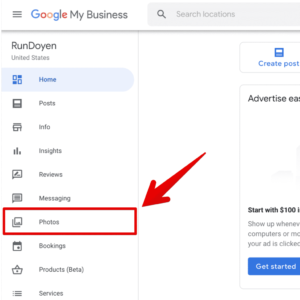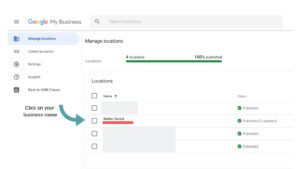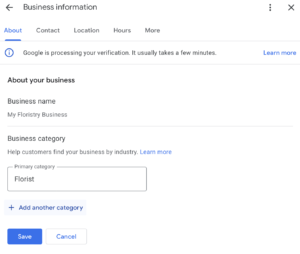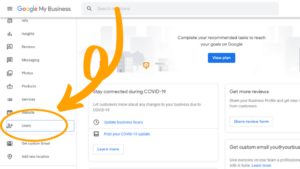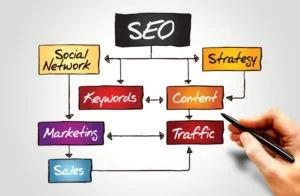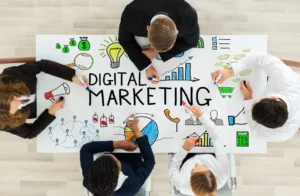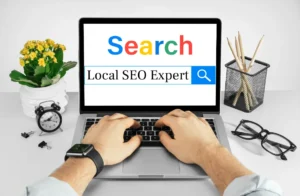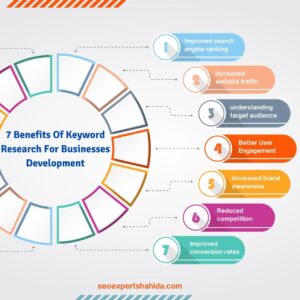Digital marketing helps small businesses by increasing online visibility and attracting targeted customers. It also enhances customer engagement and boosts sales.
Small businesses often face challenges in reaching a wider audience due to limited resources. Digital marketing offers cost-effective solutions, allowing them to compete with larger companies. Through strategies like SEO, social media marketing, and email campaigns, businesses can connect with potential customers.
These methods help in building brand awareness and driving traffic to their websites. Tools like Google Analytics provide insights into customer behavior, aiding in better decision-making. By leveraging digital marketing, small businesses can achieve significant growth and establish a strong online presence. This not only increases sales but also fosters long-term customer loyalty.
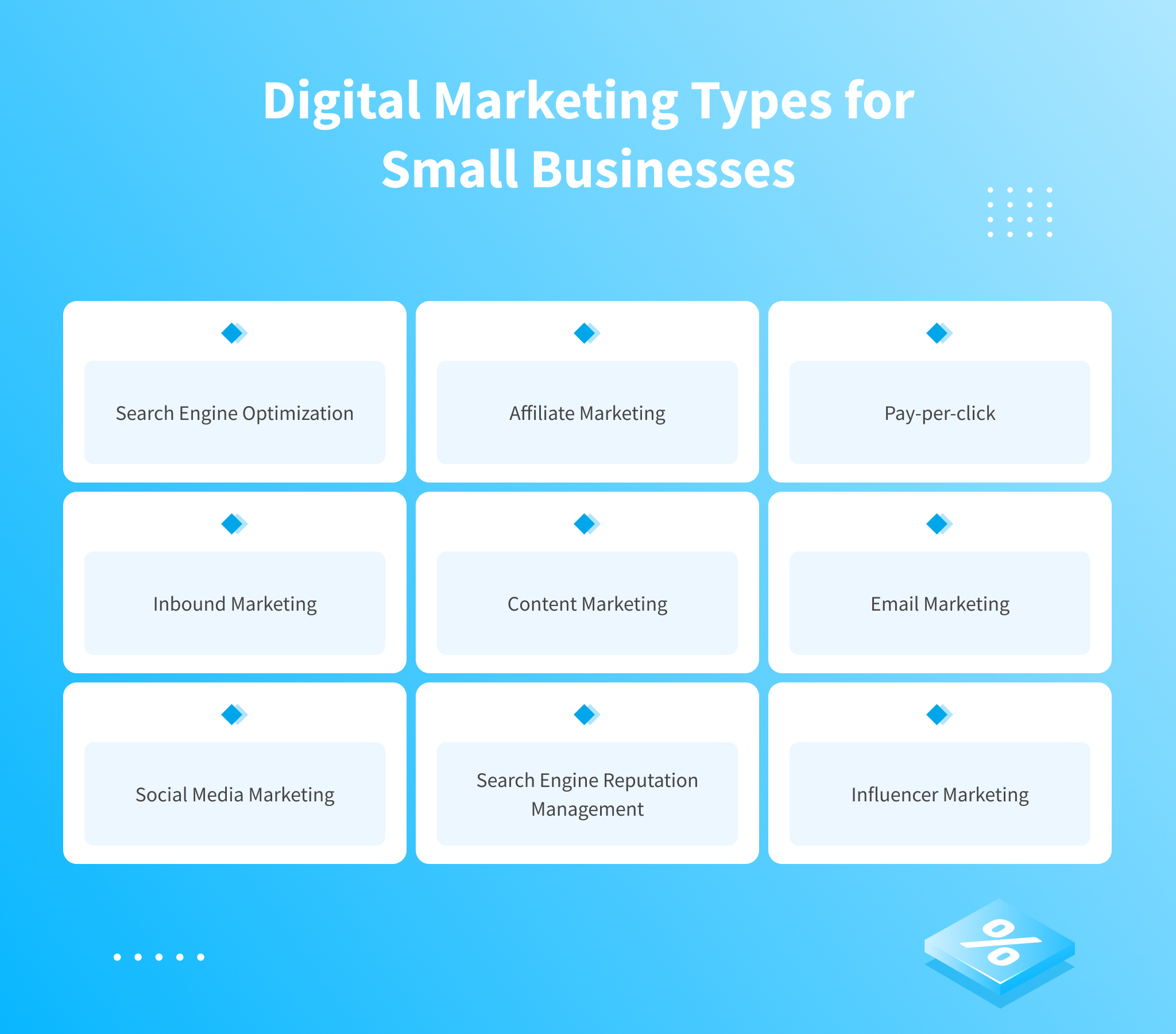
Credit: nix-united.com
Why Digital Marketing Is Essential For Small Businesses
Small businesses face many challenges in today’s competitive market. Digital marketing offers powerful solutions to these challenges. It helps small businesses grow and compete with larger companies. Here’s why digital marketing is essential for small businesses.
Increased Online Visibility
Increased online visibility is crucial for small businesses. Without it, potential customers can’t find your business. Digital marketing enhances your online presence in several ways:
- Search Engine Optimization (SEO): Optimizing your website helps it rank higher on search engines. This increases organic traffic and visibility.
- Social Media Marketing: Engaging with customers on platforms like Facebook and Instagram boosts your visibility. It also helps build a loyal customer base.
- Content Marketing: Creating valuable content attracts and retains customers. Blog posts, videos, and infographics are great tools for this.
Here’s a quick comparison of traditional vs. digital marketing visibility:
| Traditional Marketing | Digital Marketing |
|---|---|
| Local reach | Global reach |
| Limited audience | Unlimited audience |
| High cost | Lower cost |
Cost-effective Marketing
Cost-effective marketing is a significant benefit of digital marketing. Small businesses often have limited budgets. Digital marketing provides a more affordable option than traditional methods:
- Lower Advertising Costs: Online ads are cheaper than TV, radio, or print ads. Platforms like Google Ads and Facebook Ads allow you to set your budget.
- Higher ROI: Digital marketing often yields a higher return on investment. You can track your campaigns and adjust them for better results.
- Free Tools: Many digital marketing tools are free or low-cost. These include Google Analytics, social media platforms, and email marketing services.
Here’s an example of a cost comparison:
| Marketing Method | Average Cost |
|---|---|
| TV Ad | $10,000 per 30 seconds |
| Google Ads | $1-$2 per click |
| Email Marketing | $20-$100 per month |
Targeted Advertising
Targeted advertising lets you reach the right audience. This increases the chances of converting leads into customers:
- Demographic Targeting: You can target ads based on age, gender, location, and interests. This ensures your ads reach the people most likely to buy from you.
- Behavioral Targeting: Analyze user behavior to create personalized ads. This includes browsing history, past purchases, and engagement with your content.
- Remarketing: Show ads to people who have visited your website but didn’t make a purchase. This encourages them to return and complete their purchase.
Here’s a quick look at targeting options:
| Targeting Type | Description |
|---|---|
| Demographic | Based on age, gender, location |
| Behavioral | Based on user behavior and interests |
| Remarketing | Target previous website visitors |

Credit: cubecreative.design
Building A Strong Online Presence
Small businesses thrive by attracting customers. Digital marketing is a powerful tool for this. Building a strong online presence is essential. It helps businesses be seen and trusted by customers. Let’s explore three important steps: creating a professional website, optimizing for search engines, and engaging on social media.
Creating A Professional Website
A professional website is the face of your business online. It should look good and work well. Here are some key points to consider:
- Design: The website should be visually appealing. Use a clean and simple layout.
- Navigation: Make sure customers can find what they need easily. Use clear menus and categories.
- Content: Provide useful information. Include details about your products or services, contact information, and an ‘About Us’ page.
- Mobile-Friendly: Ensure the website works well on smartphones and tablets. Many customers browse on their phones.
Here is a table showing important features of a professional website:
| Feature | Description |
|---|---|
| Responsive Design | Adapts to different screen sizes |
| Fast Loading | Pages load quickly for a better user experience |
| SEO Optimized | Helps the website rank higher in search results |
Investing in a professional website is crucial. It builds trust and credibility with potential customers.
Optimizing For Search Engines
Search engine optimization (SEO) makes your website visible in search results. It helps attract organic traffic. Here are some tips for optimizing your website:
- Keyword Research: Find out what words people use to search for your products or services. Use these keywords in your content.
- Quality Content: Write informative and engaging content. Provide value to your visitors.
- Meta Tags: Use relevant meta titles and descriptions. They help search engines understand your content.
- Backlinks: Get other websites to link to your site. It improves your credibility and search ranking.
Here is a simple example of a meta tag for a bakery website:
SEO is an ongoing process. Regularly update your content and monitor your rankings. This helps maintain your visibility in search results.
Engaging On Social Media
Social media platforms are great for connecting with customers. They help you build relationships and promote your business. Follow these steps to engage effectively:
- Choose the Right Platforms: Identify where your audience spends their time. Focus on those platforms.
- Create Quality Content: Share interesting and relevant posts. Use images and videos to grab attention.
- Be Consistent: Post regularly. This keeps your audience engaged and informed.
- Interact with Followers: Respond to comments and messages. Show that you care about your customers.
Here is a table showing popular social media platforms and their benefits:
| Platform | Benefit |
|---|---|
| Large user base, versatile content sharing | |
| Visual content, great for branding | |
| Real-time updates, customer interaction |
Social media engagement boosts brand awareness. It helps build a loyal customer base.
Driving Traffic And Generating Leads
Small businesses thrive on visibility and engagement. Digital marketing plays a crucial role in driving traffic and generating leads. By leveraging online tools, small businesses can attract potential customers, converting them into loyal clients. Here’s how different digital marketing strategies help in achieving these goals.
Search Engine Optimization (seo)
SEO is the backbone of online visibility. It helps small businesses rank higher on search engines like Google. Ranking higher means more people find your business when searching for relevant keywords.
Here are some key components of SEO:
- Keyword Research: Identifying and using the right keywords that potential customers are searching for.
- On-Page SEO: Optimizing individual pages to rank higher. This includes title tags, meta descriptions, and headers.
- Content Quality: Providing valuable content that meets the needs of your audience. High-quality content keeps visitors on your site longer.
- Backlinks: Getting links from other reputable sites. This improves your site’s authority and ranking.
An optimized website attracts organic traffic, saving costs on paid advertising. Additionally, it builds trust and credibility with users. Here’s a quick comparison of on-page and off-page SEO:
| On-Page SEO | Off-Page SEO |
|---|---|
| Title Tags | Backlinks |
| Meta Descriptions | Social Shares |
| Header Tags | Guest Blogging |
Pay-per-click (ppc) Advertising
PPC advertising is a cost-effective way to generate leads quickly. Small businesses can use platforms like Google Ads to target specific audiences. You only pay when someone clicks on your ad.
Benefits of PPC advertising include:
- Immediate Results: Unlike SEO, PPC provides instant traffic.
- Targeted Advertising: You can target ads based on demographics, location, and interests.
- Budget Control: Set a daily or monthly budget to control expenses.
With PPC, you can create various ad types, including:
- Search Ads: Appear on search engine results pages.
- Display Ads: Show on websites within the Google Display Network.
- Shopping Ads: Feature product images and prices, ideal for e-commerce.
- Video Ads: Appear on YouTube and other video platforms.
Effective PPC campaigns require continuous monitoring and optimization. Analyzing performance metrics helps improve ad relevance and reduce costs.
Content Marketing Strategies
Content marketing focuses on creating and sharing valuable content to attract and retain customers. For small businesses, it’s a powerful way to build relationships and trust with the audience.
Key content marketing strategies include:
- Blogging: Regular blog posts on topics relevant to your audience. It improves SEO and keeps visitors engaged.
- Social Media Content: Sharing content on platforms like Facebook, Instagram, and LinkedIn. It helps in reaching a broader audience.
- Email Newsletters: Sending valuable content directly to subscribers’ inboxes. It keeps your brand top of mind.
- Videos and Webinars: Creating engaging video content and live webinars. Visual content often has higher engagement rates.
Consistent content creation helps establish your brand as an authority in your industry. It also fosters customer loyalty and encourages repeat business.
Here’s a table summarizing content types and their benefits:
| Content Type | Benefits |
|---|---|
| Blog Posts | Improves SEO, educates audience |
| Social Media Posts | Increases brand awareness, engagement |
| Email Newsletters | Maintains customer relationships |
| Videos/Webinars | Higher engagement, visual appeal |
By integrating these strategies, small businesses can attract more visitors and convert them into loyal customers.
Building Customer Relationships
Digital marketing revolutionizes how small businesses build customer relationships. By utilizing online tools and strategies, businesses can engage with customers on a personal level, fostering loyalty and trust. Strong customer relationships lead to repeat business and word-of-mouth referrals, essential for growth. Let’s explore how digital marketing helps build these vital connections.
Email Marketing Campaigns
Email marketing campaigns are powerful tools for building customer relationships. They allow businesses to send personalized messages directly to customers’ inboxes. Here are some ways email marketing helps:
- Personalization: Personalized emails make customers feel valued. Use their names, recommend products based on past purchases, and celebrate their birthdays.
- Regular Updates: Keep customers informed about new products, sales, and events. Regular communication keeps your brand top-of-mind.
- Exclusive Offers: Send special discounts and early access to loyal customers. Exclusive offers make customers feel special and appreciated.
For example, you can structure an email marketing campaign like this:
| Day | Content |
|---|---|
| Monday | Welcome email with a discount code |
| Wednesday | Product recommendations based on past purchases |
| Friday | Exclusive offer for the weekend |
Effective email marketing builds trust and keeps customers engaged with your brand.
Social Media Engagement
Social media engagement allows businesses to interact with customers in real-time. Here are some strategies for engaging on social media:
- Respond to Comments: Reply to customer comments and messages promptly. Show that you value their feedback and questions.
- Share User-Generated Content: Encourage customers to share their experiences with your products. Repost their content to show appreciation.
- Host Contests and Giveaways: Engage customers with fun contests and giveaways. These activities increase brand visibility and customer interaction.
Consider this example of a social media engagement strategy:
| Day | Activity |
|---|---|
| Monday | Post a customer review with a thank you note |
| Wednesday | Share a behind-the-scenes video |
| Friday | Host a live Q&A session |
Engaging on social media fosters a sense of community and loyalty among customers.
Online Customer Support
Online customer support is crucial for building strong relationships. It ensures customers get the help they need quickly and efficiently. Here are some key aspects:
- Live Chat: Offer live chat support on your website. Customers appreciate immediate assistance without waiting.
- FAQ Section: Maintain a comprehensive FAQ section. It helps customers find answers to common questions easily.
- Social Media Support: Provide customer support through social media platforms. Many customers prefer this quick and public method of communication.
Here’s how to implement an effective online customer support system:
| Support Channel | Response Time |
|---|---|
| Live Chat | Within 5 minutes |
| Within 24 hours | |
| Social Media | Within 2 hours |
Providing excellent online customer support enhances customer satisfaction and loyalty.
Measuring And Analyzing Results
Digital marketing offers small businesses the opportunity to reach a larger audience and grow their customer base. One of the key benefits is the ability to measure and analyze results. By understanding how your marketing efforts are performing, you can make data-driven decisions to optimize your strategies and maximize your ROI.
Website Analytics
Website analytics provide valuable insights into how visitors interact with your site. Tools like Google Analytics help you track key metrics such as:
- Page views: The number of times a page on your website is viewed.
- Unique visitors: The number of distinct individuals visiting your site.
- Average session duration: The average time users spend on your site.
- Bounce rate: The percentage of visitors who leave after viewing only one page.
By analyzing these metrics, you can determine which pages are most popular and which need improvement. For example, a high bounce rate may indicate that visitors are not finding what they expect, prompting you to enhance the content or design of the landing page.
Here’s a sample table to illustrate how you might track these metrics:
| Metric | Value |
|---|---|
| Page Views | 10,000 |
| Unique Visitors | 8,000 |
| Average Session Duration | 3 minutes |
| Bounce Rate | 40% |
Conversion Tracking
Conversion tracking is essential for understanding how well your digital marketing efforts are performing. Conversions can include actions such as:
- Purchases: When a visitor buys a product or service.
- Sign-ups: When a visitor registers for a newsletter or account.
- Downloads: When a visitor downloads a resource such as an ebook or whitepaper.
Using tools like Google Ads or Facebook Pixel, you can track these actions and see which campaigns are driving the most conversions. This information allows you to allocate your budget more effectively and focus on the strategies that deliver the best results.
Here’s an example of how you might track conversions:
| Campaign | Conversions | Conversion Rate |
|---|---|---|
| Google Ads | 150 | 5% |
| Facebook Ads | 200 | 6% |
| Email Marketing | 100 | 4% |
Monitoring Social Media Metrics
Social media metrics help you understand how your content is performing across different platforms. Key metrics to monitor include:
- Likes and Shares: Indicators of engagement and content popularity.
- Comments: Feedback from your audience, which can provide insights into their preferences and interests.
- Follower Growth: The increase in the number of people following your social media accounts.
- Click-Through Rate (CTR): The percentage of users who click on a link in your post.
By tracking these metrics, you can identify which types of content resonate most with your audience. For example, if video posts receive more engagement than text posts, you might decide to create more video content.
Here’s a sample table for tracking social media metrics:
| Platform | Likes | Shares | Comments | Follower Growth |
|---|---|---|---|---|
| 500 | 200 | 50 | 5% | |
| 700 | 300 | 80 | 8% | |
| 400 | 150 | 40 | 4% |
Monitoring these metrics helps you refine your social media strategy and increase your overall engagement and reach.
Staying Ahead Of Competition
Digital marketing is a powerful tool for small businesses. It levels the playing field against larger companies. One key area where digital marketing excels is helping businesses stay ahead of the competition. By leveraging digital strategies, small businesses can constantly stay updated, analyze competitors, and adapt to changing consumer behavior.
Keeping Up With Industry Trends
Staying informed about industry trends is crucial. Digital marketing helps small businesses to stay current in many ways:
- Social Media: Platforms like Twitter and LinkedIn are great for following industry leaders and popular hashtags.
- SEO Tools: Tools like Google Trends help identify what customers are searching for.
- Newsletters: Subscribing to industry-specific newsletters keeps you updated.
Using these resources, businesses can quickly adapt to new trends. This helps them stay relevant and competitive. For example, if a new technology emerges, a business can quickly learn about it through these channels and integrate it into their strategy.
Here is a simple table to show how different resources help in keeping up with trends:
| Resource | Benefit |
|---|---|
| Social Media | Real-time updates from industry leaders |
| SEO Tools | Insights into popular search terms |
| Newsletters | Regular updates on industry news |
Competitor Analysis
Understanding competitors is vital for success. Digital marketing makes this easier and more effective:
- Website Analysis: Tools like SEMrush and Ahrefs help analyze competitors’ websites.
- Social Media Monitoring: Tools like Hootsuite track competitors’ social media activity.
- Customer Reviews: Reading reviews on platforms like Yelp provides insights into competitors’ strengths and weaknesses.
By analyzing these aspects, businesses can identify gaps in the market. They can also find areas where they can improve. For example, if a competitor has a strong social media presence, a business can learn from their strategy and apply similar tactics.
Here’s a simple table to illustrate the benefits of competitor analysis tools:
| Tool | Benefit |
|---|---|
| SEMrush | In-depth website analysis |
| Hootsuite | Social media monitoring |
| Yelp | Customer review insights |
Adapting To Changing Consumer Behavior
Consumer behavior is constantly changing. Digital marketing helps businesses adapt to these changes quickly:
- Data Analytics: Google Analytics helps track consumer behavior on websites.
- Surveys: Tools like SurveyMonkey gather feedback directly from customers.
- Social Listening: Tools like Brandwatch monitor online conversations about a brand.
Using these tools, businesses can identify shifts in consumer preferences. They can then adjust their strategies accordingly. For example, if analytics show that more customers are shopping via mobile, a business can prioritize mobile optimization.
Here’s a table that shows how various tools help in understanding consumer behavior:
| Tool | Benefit |
|---|---|
| Google Analytics | Track website behavior |
| SurveyMonkey | Gather customer feedback |
| Brandwatch | Monitor online conversations |
Expanding Reach With Mobile Marketing
Digital marketing is a powerful tool for small businesses. Expanding reach with mobile marketing is one key way to grow. Mobile devices are everywhere. People use them for everything. Small businesses can tap into this trend. Let’s explore how.
Mobile-optimized Website
A mobile-optimized website is crucial. Many people browse the internet on their phones. If your site isn’t mobile-friendly, you lose potential customers. Here are some tips:
- Responsive Design: Ensure your website adjusts to different screen sizes.
- Fast Loading Speed: Mobile users leave if a site takes too long to load.
- Easy Navigation: Make it simple for users to find information.
- Clear Call to Actions: Buttons should be easy to tap on small screens.
Consider this table for quick tips:
| Aspect | Tip |
|---|---|
| Design | Use responsive design |
| Speed | Optimize images and scripts |
| Navigation | Use a simple menu |
| Call to Action | Use large, easy-to-tap buttons |
Sms Marketing
SMS marketing is direct and personal. People read texts quickly. This makes SMS a great tool for small businesses. You can use it to:
- Send Promotions: Offer discounts and special deals.
- Remind Appointments: Send reminders for upcoming appointments.
- Provide Updates: Inform customers about new products or services.
- Gather Feedback: Ask for customer reviews and opinions.
Here’s a simple strategy for SMS marketing:
- Build a list of customer phone numbers.
- Craft clear and engaging messages.
- Send messages at the right time.
- Track responses and adjust your strategy.
Mobile Advertising
Mobile advertising helps small businesses reach a broader audience. Ads on mobile apps and websites can target specific users. Here are some types:
- Banner Ads: Small ads at the top or bottom of the screen.
- Interstitial Ads: Full-screen ads that appear at natural breaks.
- Video Ads: Short videos that engage users.
- Native Ads: Ads that blend with the content.
Advantages of mobile advertising:
- Targeting: Reach users based on location, interests, and behavior.
- Engagement: Interactive ads can boost engagement.
- Analytics: Track performance and adjust campaigns.
Small businesses can use these strategies for success. Mobile marketing is a powerful way to grow your reach.
Maximizing Roi Through Digital Marketing
Small businesses often struggle to maximize their return on investment (ROI). Digital marketing offers a cost-effective way to achieve this. Leveraging online tools, small businesses can ensure every marketing dollar is well spent. Digital marketing helps businesses track performance, optimize strategies, and improve conversion rates.
Tracking And Analyzing Campaign Performance
Tracking and analyzing campaign performance is crucial. It helps businesses understand what works and what doesn’t. Here are some key points:
- Google Analytics: This free tool tracks website traffic and user behavior.
- Social Media Insights: Platforms like Facebook and Instagram offer insights into post performance.
- Email Marketing Metrics: Tools like Mailchimp show open rates, click-through rates, and more.
Using these tools, businesses can gather valuable data. This data reveals customer preferences and behaviors.
| Tool | Function |
|---|---|
| Google Analytics | Track website traffic |
| Social Media Insights | Analyze post engagement |
| Mailchimp | Monitor email campaigns |
Understanding these metrics helps in making informed decisions. It ensures that marketing efforts are effective and efficient.
Optimizing Marketing Strategies
Once businesses have tracked their campaigns, they must optimize their marketing strategies. Optimization involves tweaking various elements to improve performance. Here are some steps to consider:
- A/B Testing: Test different versions of ads to see which performs better.
- Keyword Research: Use tools like Google Keyword Planner to find relevant keywords.
- Content Quality: Ensure content is engaging and valuable to the target audience.
By following these steps, businesses can refine their strategies. This leads to better engagement and higher ROI.
Optimization also involves analyzing competitor strategies. Understanding what competitors are doing can provide insights into what works in the industry.
Regular updates to campaigns are essential. The digital landscape is dynamic, and strategies must evolve accordingly.
Improving Conversion Rates
Improving conversion rates is the ultimate goal of any marketing strategy. Higher conversion rates mean more sales and better ROI. Here are some tips to improve conversion rates:
- Clear Call-to-Actions (CTAs): Make sure CTAs are visible and compelling.
- Landing Page Optimization: Ensure landing pages are user-friendly and load quickly.
- Customer Testimonials: Display positive reviews and testimonials to build trust.
These tips help convert visitors into customers. They make the user journey seamless and engaging.
Another effective strategy is to use retargeting ads. These ads target users who have shown interest but haven’t converted yet. Retargeting keeps your brand top of mind and encourages users to take action.
Improving conversion rates requires continuous monitoring and adjustment. Small changes can lead to significant improvements in ROI.

Credit: blog.konsolegroup.com
Frequently Asked Questions
How Does Digital Marketing Benefit Your Business?
Digital marketing boosts your business by increasing online visibility, attracting more customers, and improving sales. It offers targeted advertising, measurable results, and cost-effective strategies. Engage with your audience directly through social media, email marketing, and SEO to build brand loyalty and drive growth.
How Does Digital Marketing Play A Key Role For Your Small Business?
Digital marketing boosts small business visibility, drives website traffic, and increases customer engagement. It is cost-effective and targets specific audiences. Social media, SEO, and email marketing enhance brand awareness and sales.
How Digital Marketing Helped My Business?
Digital marketing boosted my business by increasing online visibility, attracting more customers, and enhancing brand awareness. It improved lead generation, sales, and overall growth through targeted strategies and analytics.
How Does Digital Marketing Drive Sales For Small Businesses?
Digital marketing boosts sales for small businesses by increasing online visibility, attracting targeted traffic, and converting leads into customers. Social media, SEO, and email campaigns engage audiences and drive conversions. Effective strategies build brand loyalty, resulting in higher sales and growth.
Conclusion
Digital marketing offers small businesses a powerful way to grow and compete. It enhances visibility, drives traffic, and boosts sales. By leveraging digital strategies, small businesses can engage with their target audience effectively. Embracing digital marketing ensures sustainable growth and long-term success in a competitive market.
Start implementing these tactics today and see the difference.



